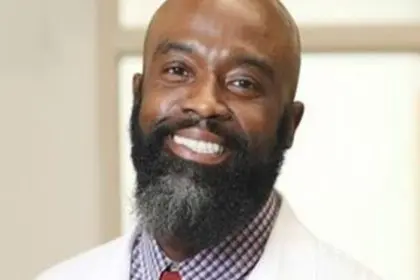Medical schools across America are witnessing a troubling decline in Black student enrollment, with numbers dropping by 11.6 percent for the 2024-2025 academic year. This significant decrease comes in the wake of the Supreme Court’s decision to overturn affirmative action in college admissions, creating what many health care leaders describe as a potential crisis for the future of equitable health care in the United States.
The dramatic enrollment decline has unfolded more rapidly than many educational experts anticipated, raising urgent questions about how medical institutions can maintain diversity in their programs without previously established admissions frameworks.
The swift impact of policy changes
The Supreme Court’s ruling against affirmative action in higher education has produced immediate and measurable effects on medical school demographics. Health care leaders had predicted some decline following the decision, but many express surprise at both the speed and magnitude of the decrease.
The president and CEO of Meharry Medical College noted that while a drop in enrollment was expected following the court’s ruling, the rapid decline has been particularly alarming. Without deliberate measures to ensure minority representation in medical education, this downward trend was inevitable but has manifested faster than many institutional leaders projected.
Many medical schools have historically worked to cultivate diverse student bodies, recognizing the essential role diversity plays in developing health care professionals prepared to address the needs of an increasingly diverse patient population. The current decline threatens decades of progress toward creating a more representative physician workforce.
Critical implications for health care delivery
The diminishing representation of Black students in medical education presents serious concerns for the future of health care delivery in America. Research consistently demonstrates that health care providers from diverse backgrounds contribute uniquely to improving medical outcomes for underserved populations.
Medical students exposed to curriculum that addresses the historical experiences of Black individuals in health care systems develop greater awareness of potential racial bias in treatment protocols. This educational component proves vital for dismantling systemic racism within health care institutions and practices.
Patient outcomes often improve when individuals receive care from providers with shared cultural backgrounds or experiences. These connections foster trust, enhance communication, and ultimately lead to more effective treatment plans. As Black student enrollment decreases, the potential for these beneficial provider-patient relationships diminishes proportionally.
Intersecting concerns in health care leadership
The enrollment crisis coincides with other troubling developments in health care administration. Recent substantial layoffs within the Department of Health and Human Services have compounded concerns about the future direction of health care policy and implementation.
Industry leaders have expressed apprehension regarding these administrative changes and their potential impact on health care accessibility. The CEO of the Association for Accessible Medicines has highlighted that while improving efficiency at agencies like the FDA represents a worthwhile goal, substantial personnel reductions could compromise the agency’s core mission of facilitating innovative medicine delivery to patients.
Similarly, representatives from the Pharmaceutical Research and Manufacturers of America warn that losing experienced personnel could undermine the quality and consistency of regulatory reviews. These parallel developments create a concerning pattern of potential disruption to health care systems already struggling with equity challenges.
5 essential strategies for reversing the enrollment decline
Medical education leaders identify several key approaches that could help reverse the troubling enrollment trend:
Expanded pathway programs must be developed to identify and support potential Black medical students earlier in their educational journeys, beginning in high school or even middle school.
Increased scholarship funding directed specifically toward underrepresented students can help address the disproportionate financial barriers that often prevent qualified Black students from pursuing medical education.
Mentorship initiatives connecting current Black physicians with prospective medical students create vital support networks that help navigate the complex application and educational process.
Revised admissions criteria that take a more holistic approach to evaluating candidates can identify promising students whose potential might not be fully reflected in standardized test scores alone.
Community partnerships between medical schools and historically Black colleges and universities can create direct pipelines for talented students to enter medical education programs.
These approaches require substantial institutional commitment and resource allocation but represent necessary investments in the future of equitable health care delivery.
The broader context of health care disparities
The declining enrollment of Black medical students exists within a larger framework of persistent health care disparities in America. Black Americans continue to experience disproportionately negative health outcomes across numerous conditions, from maternal mortality to cardiovascular disease.
A more diverse physician workforce represents one critical component in addressing these disparities. Black physicians are more likely to practice in underserved communities and bring valuable perspective to research priorities and clinical approaches that might otherwise be overlooked.
The COVID-19 pandemic starkly highlighted existing health care inequities, with Black communities suffering disproportionately high infection and mortality rates. This recent experience underscores the urgent need for health care providers equipped to address the specific challenges facing diverse populations.
Without intervention to reverse current enrollment trends, these disparities may worsen as the physician workforce becomes increasingly unrepresentative of the population it serves.
Medical schools seek new approaches
Medical schools across the country are grappling with how to maintain diversity without affirmative action policies. Many institutions are exploring new approaches to recruitment and admission that remain legally compliant while still working toward diverse student cohorts.
Some schools have shifted focus to socioeconomic factors rather than race specifically, hoping to maintain diversity through different metrics. Others are investing more heavily in pre-medical programs that can prepare underrepresented students more effectively for the rigors of medical school applications.
Increasing emphasis on community service and health care experience in underserved areas may also help identify candidates committed to addressing health care disparities regardless of their background. However, educators caution that these proxy approaches may not fully replace the effectiveness of more direct diversity initiatives.
Medical school administrators emphasize that diversity in health care education benefits all students, exposing future physicians to varied perspectives and preparing them for the diverse patient populations they will ultimately serve.
The economic dimension of medical education
Financial barriers present another significant obstacle to increasing Black representation in medical education. The average medical school graduate carries more than $200,000 in educational debt, a burden that falls particularly heavily on students from communities with less generational wealth.
This financial reality often discourages qualified candidates from even applying to medical school, creating a selection bias long before the formal admissions process begins. Addressing this dimension of the problem requires creative approaches to funding medical education for students from underrepresented backgrounds.
Loan forgiveness programs for physicians who practice in underserved areas represent one potential solution, creating financial incentives that align with broader goals of improving health care access. Expanded scholarship opportunities specifically targeting underrepresented students could also help mitigate the financial deterrent.
Without addressing these economic factors, other diversity initiatives may have limited effectiveness in reversing the current enrollment decline.
The imperative for immediate action
The dramatic decrease in Black medical student enrollment demands urgent attention from educational institutions, policymakers, health care organizations, and communities. The consequences of inaction extend far beyond the academic realm, potentially compromising health care quality and access for millions of Americans.
Creating a more representative physician workforce requires sustained commitment across multiple sectors and a willingness to invest in both short-term and long-term solutions. The current crisis presents not just a challenge but an opportunity to reimagine medical education in ways that better serve our diverse society.
The future of equitable health care in America depends significantly on today’s response to this alarming enrollment trend. With thoughtful intervention and dedicated resources, medical schools can work to reverse this decline and help build a health care system that truly serves all communities with excellence and cultural understanding.


















